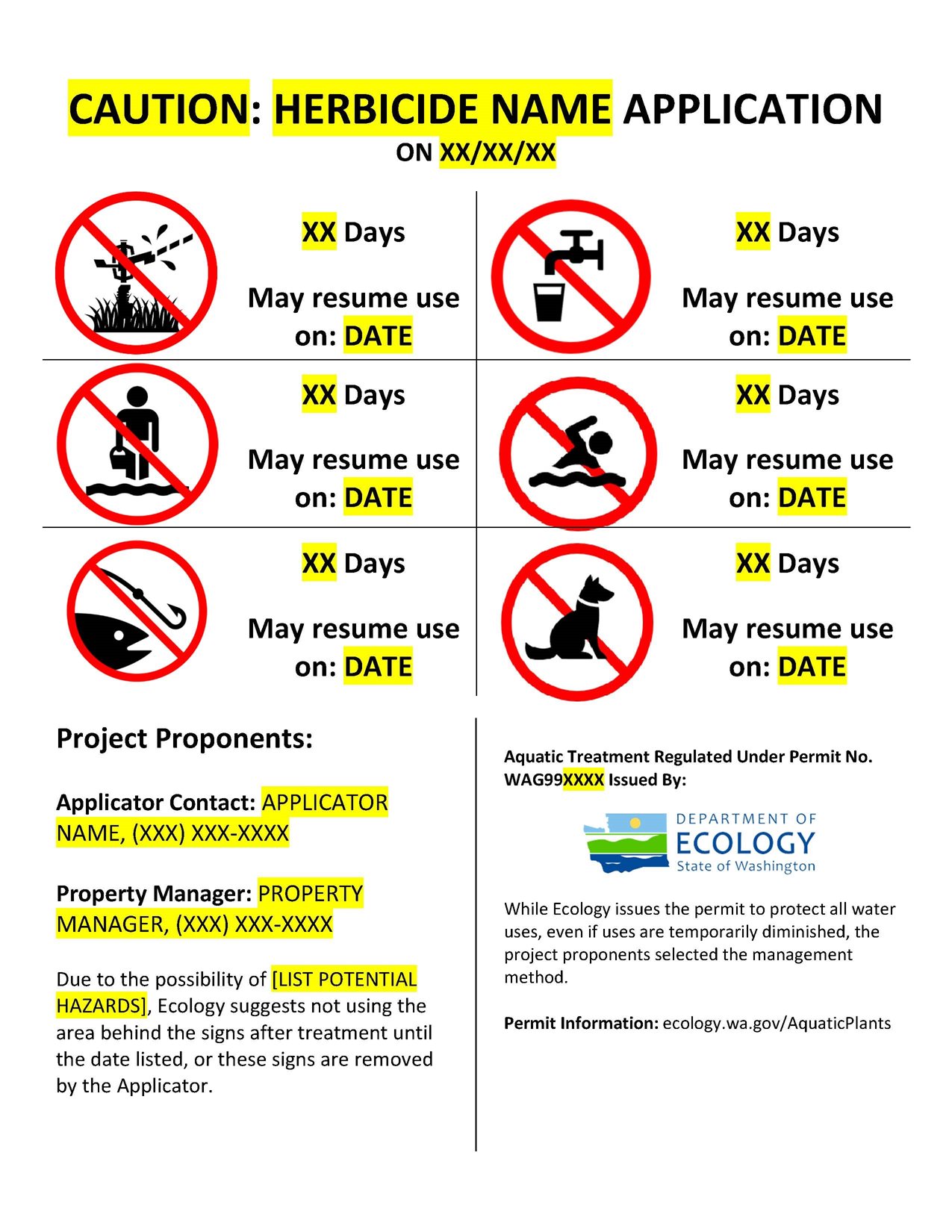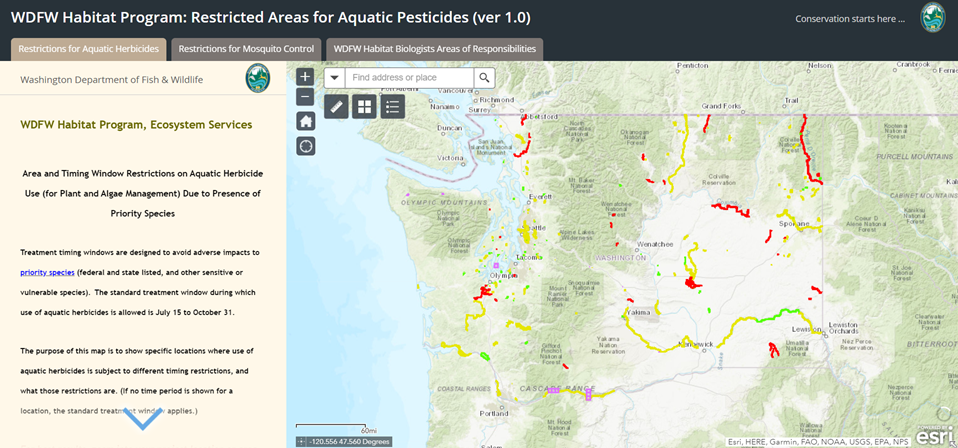What are treatment timing windows?
The Washington Department of Fish and Wildlife (WDFW) has established treatment timing windows for the use of aquatic pesticides. These timing windows limit when applicators can use certain chemicals. The goal is to protect sensitive species of fish, birds, other wildlife, and priority habitats.
Permittees covered by the Aquatic Plant and Algae Management permit (APAM) must comply with these WDFW treatment timing windows. The active ingredients that trigger timing windows for fish species are listed below (these are also noted in Table 2 on pp 16-18 of the APAM permit):
- 2, 4 – D (amine)
- 2, 4 – D (ester)
- Carfentrazone-ethyl
- Diquat
- Endothall (dipotassium salt)
- Endothall (mono salt)
- Flumioxazin
Use of other active ingredients listed in Table 2 must still follow any timing windows or conditions for other types of wildlife. Permittees must refer to the WDFW timing window map for more information about waterbody-specific timing windows before conducting any treatments. Some treatment timing windows require consultation with WDFW prior to beginning any treatment.
How can I request a timing window change?
Permittees may request a modified treatment timing window by emailing the information listed below to Ecology at aquaticpesticideperm@ecy.wa.gov. Requests may be approved, conditionally approved, or denied by WDFW on an annual basis. New permit applicants may request a modified treatment timing window at the time of permit application. Current permittees may request a modified treatment timing window at any time.
To request changes to a WDFW Treatment Timing Window (TTW):
- If this is a new permit coverage, start by indicating you are requesting this change in section VII of the Notice of Intent application form in SAW.
- For information on a specific waterbody go to the WDFW Treatment Timing Window map. Instructions are located in the column to the left of the map.
- Gather the information in the instructions section below and email it to Ecology.
- Please allow up to 30 days for the WDFW review process. If you are applying for new permit coverage, the WDFW review can happen at the same time as the 30-day public comment period.
Instructions for requesting a Timing Window modification
To request a WDFW timing window modification, send the following information to Ecology at aquaticpesticideperm@ecy.wa.gov:
- Name of the waterbody and county.
- Current permit coverage number, if you already have one.
- Treatment timing window dates you are requesting.
- Chemical(s) to be applied.
- Which of the chemicals proposed for use trigger an APAM Table 2, footnote 2 fish timing window? APAM general permit (see pages 16-18)
- What is the waterbody’s treatment window in WDFW 2015?
- Locations to be treated (provide a map).
- Date(s), frequency and acreage of proposed treatment(s) (or best estimate if unsure).
- List of targeted Noxious weeds and their Classification (A, B, C, Monitor).
- Which of the targeted noxious weeds are on WSDA’s Quarantine Weed List?
- Is this an “early infestation” per WDFW 2015?
- Describe any timing window modification granted or denied for this waterbody since April 21, 2021, (the effective date of current APAM permit).
- Describe justification for the requested timing window change.



